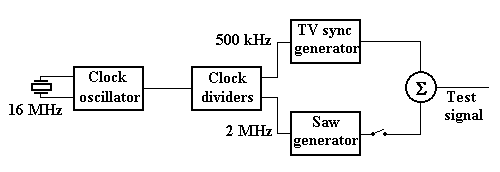| Pixel Jitter in Video Capture Devices and Frame Grabbers |
|---|
| This technical brief discusses a phenomenon common to video capture devices and frame grabbers known as pixel jitter and a technique for measuring this characteristic. |
OverviewVideo cameras acquire images by sampling "pixels" (an acronym for "picture elements") at periodic time intervals. Most cameras utilize self-contained crystal-controlled oscillators to control pixel acquisition timing, resulting in very stable pixel sampling rates. Analog video capture devices and frame grabbers convert analog video signals into digital form. Internally, this conversion is performed by a circuit known as a video decoder which, ideally, will digitize pixels at exactly the same rate they were acquired by the camera. Unfortunately, cameras typically do not output the associated pixel acquisition clock along with the video signal. Consequently, a video decoder must attempt to reconstruct the camera's pixel clock by generating a stable reference clock which is synchronized to the horizontal sync pulses of the camera video signal. Any timing difference between a video decoder's sampling clock and the camera's pixel clock has the potential to cause measurement error. Since useful video signals are seldom constant over time, such measurement errors result in a form of noise. The magnitude of this noise is affected by two components: sampling clock error and video slew rate. What is Pixel Jitter?In order to quantify the noise caused by pixel timing errors, it is useful to isolate and focus on the sampling clock error since this characteristic is independent of the nature of the video image being captured. Typically, sampling clock errors are principally due to fluctuations in a video decoder's reconstructed pixel clock. "Pixel jitter" is the measure of a video decoder's time variation in pixel-to-pixel sampling interval. ExampleTo visualize how pixel jitter affects a digitized video signal, let us consider an example. Suppose we are monitoring an NTSC video signal at a particular pixel, located at an image area where the luminance amplitude is changing by 30 percent of full scale per pixel. This corresponds approximately to a complete black-to-white transition over three adjacent pixels. Furthermore, let's assume that the video decoder employs an eight-bit A/D converter for digitizing the incoming video signal. If pixel jitter is specified to be ±5 nanoseconds, the relative sample time — the sample time with respect to the most recent horizontal sync pulse — for the monitored pixel can vary by as much as ten nanoseconds from frame to frame. In NTSC standard resolution mode, the period of one pixel is close to eighty nanoseconds, so the resulting pixel amplitude variations will be: 30% * 10ns / 80ns = 3.75% Therefore, the monitored pixel may vary by as much as 3.75 percent of full scale, which corresponds to a 9.5 LSB error from the A/D converter. This example demonstrates that the effect of pixel jitter depends greatly on the rate of change of the video signal amplitude. If signal amplitude varies rapidly along the time axis, noise resulting from pixel jitter can be substantial, as this example shows. At lower rates of change, the effects of pixel jitter are reduced and eventually become negligible. Measuring Pixel JitterThe block diagram of a pixel jitter measurement circuit is shown below. This circuit produces a monochrome video test signal consisting of the standard NTSC sync signals and a synchronized video sawtooth waveform.
The period of each sawtooth wave is 500 nanoseconds, and the duration of the linear rising sawtooth area is 250 nanoseconds. The same sawtooth pattern is repeated on every TV line. Since the sawtooth wave and sync signals are all derived from a single, stable oscillator, the video source is in effect "jitterless."
To measure pixel jitter, the test signal is applied to and digitized by the device under evaluation. By means of a simple computer program, one column of pixels is extracted from the captured image data. The horizontal position of the extracted column is chosen to coincide with the linear portion of one of the sawtooth waves. Variations in the digitized signal data along the column are attributed to both pixel jitter and random noise, so that: Vc = Vj + Vn where Vc = Variance of column data, Vj = Variance due to pixel jitter and
By repeating the same measurement with the saw-tooth signal turned off, the Vn component is measured. The standard deviation value of pixel jitter is then calculated:
Pixel Jitter = ±Sigma (nanoseconds) |




